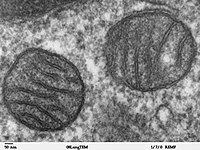
Scoliosis in Friedreich's ataxia: longitudinal characterization in a large heterogeneous cohort
Sign Up to like & getrecommendations! Published in 2021 at "Annals of Clinical and Translational Neurology"
DOI: 10.1002/acn3.51352
Abstract: The objective of this study was to characterize the incidence and progression of scoliosis in the natural history of Friedreich’s ataxia (FRDA) and document the factors leading to the requirement for corrective surgery. read more here.
Keywords: longitudinal characterization; ataxia longitudinal; characterization large; friedreich ataxia ... See more keywords

Results of a randomized double‐blind study evaluating luvadaxistat in adults with Friedreich ataxia
Sign Up to like & getrecommendations! Published in 2021 at "Annals of Clinical and Translational Neurology"
DOI: 10.1002/acn3.51373
Abstract: Friedreich ataxia (FRDA) is a rare disorder with progressive neurodegeneration and cardiomyopathy. Luvadaxistat (also known as TAK‐831; NBI‐1065844), an inhibitor of the enzyme d‐amino acid oxidase, has demonstrated beneficial effects in preclinical models relevant to… read more here.
Keywords: randomized double; luvadaxistat adults; friedreich ataxia; study ... See more keywords

Auditory neuropathy in mice and humans with Friedreich ataxia.
Sign Up to like & getrecommendations! Published in 2023 at "Annals of clinical and translational neurology"
DOI: 10.1002/acn3.51777
Abstract: OBJECTIVE Recent studies have found that human Friedreich ataxia patients have dysfunction of transmission in the auditory neural pathways. Here, we characterize hearing deficits in a mouse model of Friedreich ataxia and compare these to… read more here.
Keywords: steady state; friedreich ataxia; auditory steady; mice ... See more keywords

Identification of a novel missense mutation in Friedreich's ataxia –FXNW 168R
Sign Up to like & getrecommendations! Published in 2019 at "Annals of Clinical and Translational Neurology"
DOI: 10.1002/acn3.728
Abstract: Friedreich's ataxia, characterized by decreased expression of frataxin protein, is caused by GAA trinucleotide repeats within intron 1 in 98% of patients. Two percent of patients carry GAA repeats in conjunction with a point mutation.… read more here.
Keywords: novel missense; friedreich ataxia; missense mutation; identification novel ... See more keywords

Corneal confocal microscopy: Neurologic disease biomarker in Friedreich ataxia
Sign Up to like & getrecommendations! Published in 2018 at "Annals of Neurology"
DOI: 10.1002/ana.25355
Abstract: Friedreich ataxia (FRDA), an autosomal recessive neurodegenerative disease caused by mutations in the gene encoding for the mitochondrial protein frataxin, is characterized by ataxia and gait instability, immobility, and eventual death. We evaluated corneal confocal… read more here.
Keywords: microscopy; friedreich ataxia; disease; corneal confocal ... See more keywords

Brain Structure and Degeneration Staging in Friedreich Ataxia: Magnetic Resonance Imaging Volumetrics from the ENIGMA‐Ataxia Working Group
Sign Up to like & getrecommendations! Published in 2021 at "Annals of Neurology"
DOI: 10.1002/ana.26200
Abstract: Friedreich ataxia (FRDA) is an inherited neurological disease defined by progressive movement incoordination. We undertook a comprehensive characterization of the spatial profile and progressive evolution of structural brain abnormalities in people with FRDA. read more here.
Keywords: staging friedreich; friedreich ataxia; degeneration staging; structure degeneration ... See more keywords

Structural signature of classical versus late‐onset friedreich's ataxia by Multimodality brain MRI
Sign Up to like & getrecommendations! Published in 2017 at "Human Brain Mapping"
DOI: 10.1002/hbm.23655
Abstract: Friedreich's ataxia (FRDA) is the most common autosomal‐recessive ataxia worldwide. It is characterized by early onset, sensory abnormalities, and slowly progressive ataxia. However, some individuals manifest the disease after the age of 25 years and… read more here.
Keywords: onset; late onset; friedreich ataxia; ataxia ... See more keywords

Pseudodominance in Friedreich Ataxia—Impact of High Prevalence of Carriers and Intrafamilial Clinical Variation
Sign Up to like & getrecommendations! Published in 2023 at "Movement Disorders Clinical Practice"
DOI: 10.1002/mdc3.13694
Abstract: Friedreich ataxia (FA) is the most common form of autosomal recessive (AR) ataxia. It is a rare disease, but carriers are frequent (1/100). Pseudodominance in FA has seldomly been reported; it may pose additional challenges… read more here.
Keywords: high prevalence; impact high; friedreich ataxia; pseudodominance ... See more keywords

Drug repositioning screening identifies etravirine as a potential therapeutic for friedreich's ataxia
Sign Up to like & getrecommendations! Published in 2019 at "Movement Disorders"
DOI: 10.1002/mds.27604
Abstract: Friedreich's ataxia is an autosomal‐recessive cerebellar ataxia caused by mutation of the frataxin gene, resulting in decreased frataxin expression, mitochondrial dysfunction, and oxidative stress. Currently, no treatment is available for Friedreich's ataxia patients. Given that… read more here.
Keywords: drug repositioning; friedreich ataxia; frataxin; ataxia ... See more keywords

Progressive Spinal Cord Degeneration in Friedreich's Ataxia: Results from ENIGMA‐Ataxia
Sign Up to like & getrecommendations! Published in 2022 at "Movement Disorders"
DOI: 10.1002/mds.29261
Abstract: Spinal cord damage is a hallmark of Friedreich's ataxia (FRDA), but its progression and clinical correlates remain unclear. read more here.
Keywords: progressive spinal; friedreich ataxia; cord degeneration; spinal cord ... See more keywords

Frataxin deficiency alters gene expression in Friedreich ataxia derived IPSC‐neurons and cardiomyocytes
Sign Up to like & getrecommendations! Published in 2022 at "Molecular Genetics & Genomic Medicine"
DOI: 10.1002/mgg3.2093
Abstract: Friedreich's ataxia (FRDA) is an autosomal recessive disease, whereby homozygous inheritance of an expanded GAA trinucleotide repeat expansion in the first intron of the FXN gene leads to transcriptional repression of the encoded protein frataxin.… read more here.
Keywords: neurons cardiomyocytes; friedreich ataxia; gene; frataxin deficiency ... See more keywords